Once put into service as tugs, the various types of naval vessels quickly turned out to be versatile quick-change artists. But after many decades at sea, it is now time to decide on a successor.
A Swiss Army knife is a useful little thing, usually carried inconspicuously on a belt or in a trouser pocket so that it is immediately available when needed. There are many very useful functions on such a multi-purpose knife and few, if any, useless ones. This is no surprise, as experts have been working on the development of such tools for decades, supported by user feedback. Basic functions and tried-and-tested features can be found in every version, while specialised tools are only found in special user versions for specific professional groups such as hunters or sailors. A Swiss Army Knife is therefore undoubtedly a useful, small and inexpensive helper for everyday use. As long as this helper remains ready to hand and in working order. It is of no use in a drawer and once lost, you will miss it the next day. Of course, individual functions can be replaced by other means if necessary, but this always takes longer and is usually more expensive. The German Navy's tugs are in the process of being consigned to this imaginary drawer. However, time is now running out to avert the impending loss of capability. After all, towing is just one function among many others that these multitools provide for the German Navy. Speaking of which: in recent years, terms such as multi-purpose or multitool have become almost inflationary, especially in the Bundeswehr. Everyone and everything is versatile and versatile. Therefore, other comparisons should originally be used here. However: Even if such designations are now perhaps used a little too generously, it is precisely this term that appears to be the most appropriate after a lengthy study of the tasks of the tugs.
First of all, it must be explained that the generic term "tugboat" covers completely different units in the German Navy. On the one hand, there are the harbour tugs, which perform the classic tug and towage tasks when larger warships dock and cast off in the naval ports. In other words, they are comparable to their civilian counterparts in the world's commercial harbours. On the other hand, the German Navy operates deep-sea tugs and salvage tugs, which are used for extensive support tasks and less frequently for classic towing operations.
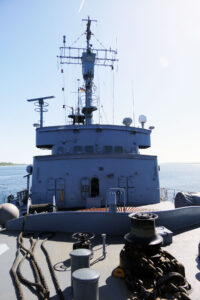
The two ocean-going tugs WANGEROOGE and SPIEKEROOG as well as the salvage tug FEHMARN of the Wilhelmshaven-based Trossgeschwader have lost their class by the end of 2021. The class is the operating licence for a ship. It requires a series of passed technical inspections and the receipt of various certificates relating to ship operation and ship safety. These are monitored and inspected on behalf of the Bundeswehr by the civilian classification society DNV and the Federal Office of Bundeswehr Equipment, Information Technology and In-Service Support (BAAINBw).
Regaining the class requires a shipyard overhaul, which is planned for the SPIEKEROOG from March 2022 and for the FEHMARN from September 2022. For the WANGEROOGE, the shipyard overhaul began in December 2021 after a long wait.
This means that almost all of the multitools are in the aforementioned drawer and short-term alternatives have already been sought: WANGEROOGE and SPIEKEROOG will be replaced by a chartered harbour tug during their maintenance-related absences at the Open Sea Survival Training (OSST). However, there are some compromises in terms of the training programme and the comfort of the course participants. However, the necessary safety standards for the training programme and cooperation with the supporting marine helicopter at Winchex should also be met by the civilian company.
In the medium term, the creation of a cooperation company to maintain the towing, manoeuvring and manoeuvring capability for seagoing units is considered possible. The company is therefore considering renting the towing capabilities on the civilian market. However, as already indicated, this only covers a small part of the overall capabilities of the widely differing tugs. In the meantime, there are plans to obtain as many of these capabilities as possible for the German Navy with the project Sea-Based Naval Training and Sea Trials (SAMSe), with WTD 71 taking the lead in planning.
The planned SAMSe capability carrier will then take on research tasks for WTD 71 as a standardised ship class with two units and, with four to six additional units, replace the four sea tugs and one salvage tug operated by the German Navy. The project is currently still in the analysis phase.
The multi-purpose boats BREITGRUND and MITTELGRUND still in service at WTD 71 and the barrage weapon test boat WILHELM PULLWER will be replaced independently of the SAMSe project by two new units of approximately 50 metres in length, which will be built by Fassmer Werft as measurement boats Seeversuche Küste. Further decisions on the future course of development of the SAMSe project for WTD 71 and the German Navy will be made in 2022. If approved, the first two units for WTD 71 could be delivered from the second half of the decade.
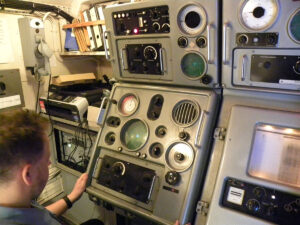
The main task of the multi-purpose ships assigned to the German Navy is to provide training support for its soldiers. The ability to tow naval vessels over medium and long distances would take a back seat here. Almost exactly as is the case with the sea tugs and salvage tugs currently in service.
The original planners of the young German Navy decided at the time not to create a standardised "egg-laying woolly milk sow". In other words, the salvage tug FEHMARN and the seagoing tug SPIEKEROOG would not tow frigates from berth to berth and the harbour tug LÜTJE HÖRN would not bring task force supply vessels with propulsion damage from the Bay of Biscay to Wilhelmshaven. For this reason, the German Navy procured various basic types of support units, the most important parameters of which were adapted to their core tasks. Here is a historical overview:
Harbour tugs (small/large - various classes: 729, 724, 723, 721, 660 )
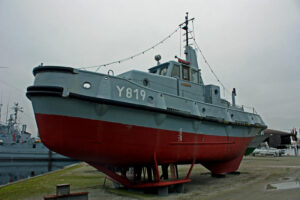
Initially from 1958 LÜTJE-HÖRN class (8 units), EISVOGEL class (2 units) as well as a hodgepodge of various harbour tugs from the Kriegsmarine and US Navy and from 1990 from the Volksmarine. A total of 25 units at different times of utilisation. Of these, six units of the NORDSTRAND class remain to this day, which were gradually put into service from 1987. These harbour tugs have fulfilled their tasks - around the clock if required - in all German naval ports.
The service mainly consists of the classic towing and bowing work that is carried out daily in every naval harbour and coastal areas in the North and Baltic Seas. This is supplemented by sea target towing as required and, in particularly cold winters, occasional deployment as an icebreaker.
Ocean-going tug class 722 (WANGEROOGE class)
Originally, six units of this class were procured from 1965 onwards. The NORDERNEY was handed over to the Uruguayan Navy in 2002, where it is still in service today as the MALDONADO. The LANGEOOG, which was last used as a mine diving boat for the training and deployment of specialised naval forces, was decommissioned in 2012 for cost reasons and has since been scrapped in the Netherlands. The main tasks of this class of tug were originally the towing and recovery of naval vessels and assistance at sea, as well as the recovery of practice torpedoes and the towing of shooting targets. In recent decades, however, the four remaining units have focussed on two main tasks.
Following their conversion towards the end of the 1970s, the JUIST and BALTRUM were used as diver training boats by the ship safety training group of the Technical Naval School. For this purpose, the towing winches were removed and diving pressure chambers were installed. The practical diver training courses carried out on board these two boats are mostly conducted in the western Baltic Sea.
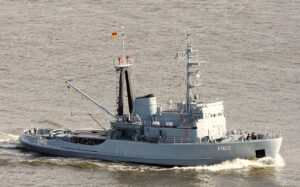
WANGEROOGE and SPIEKEROOG support the Bremerhaven Naval Operations School with Open Sea Survival Training. All Bundeswehr aircraft crews have to undergo this survival training at sea. Various emergency procedures and the correct behaviour during a rescue by SAR helicopters are practised under real conditions and in almost any weather in the Elbe estuary. The OSST also has such a good international reputation that aircraft crews from friendly armed forces and civilian airlines are regularly trained.
Class 720 salvage tug (HELGOLAND class)
Only two units of this largest and fastest tugboat class to date were built from the mid-1960s onwards. The second type ship HELGOLAND was also handed over to the Uruguayan Navy in 1998 and is still in service there today as the OYARVIDE. This leaves the German Navy with only the FEHMARN, which has now been faithfully fulfilling its diverse tasks for over 55 years (see box).
During the "hot phase" of the Cold War, the initial deployment concept for these large salvage tugs was a rather martial one: after a naval battle, the victorious but damaged destroyers and frigates were to be salvaged from the battle area and then sent for repairs. As the enemy might not like this, both units were equipped with a double Breda L/70 gun carriage with a calibre of 40 millimetres for self-defence. Overpressure could be generated in the ships to prevent the penetration of NBC warfare agents. The upper deck would have been protected and flushed with a sprinkler system. Fires or water ingress on the battleships would have been fought with the help of four fire extinguishing monitors, each with a capacity of 100 cubic metres per hour, two external bilge pumps, each with a capacity of 1000 cubic metres per hour, and four Pleuger underwater pumps with a capacity of 150 to 200 cubic metres. In order to carry out emergency repairs at sea, the other equipment still included an electric underwater welding device, which was unique in this design in the navy, a salvage air compressor and various workshops. Fortunately for all involved, this salvage scenario never materialised under combat conditions.
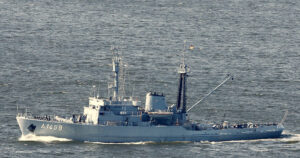
Instead, the versatile uses of these two ocean-going vessels crystallised in the first few years after their commissioning and are still regularly used today with varying emphasis. These include
- Accompanying and securing submarines, providing support during torpedo firing in Norwegian waters, the Skagerrak or the Baltic Sea - supporting the submarine training centre (AZU) in WO and commander trainee training. The FEHMARN's underwater telephone is an important means of communication. In the event of diving accidents, it is also equipped with a pressurised chamber that can hold up to ten people.
- Mine laying and mine recovery for the training of minehunting boats or during international manoeuvres in the North Sea and Baltic Sea
- Carrying out deep-diving training trips with the mine divers to the Baltic Sea, Norway or Great Britain
- Various training support trips for combat swimmers, the naval battalion, officer students at the Mürwik Naval School and even occasionally for the GSG 9 and the DWD's maritime weather training programme
- Participation in national and international naval manoeuvres of all kinds and representing the German Navy at maritime events
Up to twelve course participants and instructors can be accommodated on board for these tasks. Over the last few decades, naval tankers and frigates with propulsion damage have been escorted and towed on several occasions. In most cases, however, the training of prospective submarine watch officers involves practising establishing a towing connection and the towing itself for a few hours.
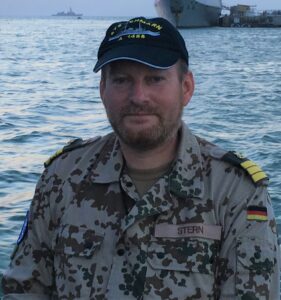
The versatility of all the tug classes described is not only made possible by their extensive technical equipment, but also by their crew concept. All tug crews were and are civilian employees. Compared to military crews, this means a consistently high level of experience, routine and operational readiness, as there are no regular, extensive job changes. Service on board is not just a step on the career ladder, but a permanent job. The team does not have to be constantly reorganised and individual new recruits can be integrated quickly. Some of the next generation of ship mechanics can be trained directly on board. Crew members have often previously served as marines, so despite their civilian status, there is a high level of compatibility with all military practices and procedures. In particular, specialists in the (old) job series 11 Deck Service, 21 Radio Operator, 26 Nautical Officer, 27 Signaller and, of course, all jobs in the field of ship technology have the opportunity for a "second life" in the German Navy and are always welcome.
As mentioned at the beginning, practically all of the German Navy's tugs are currently in serious trouble, despite their great usefulness to the armed forces. Just as would be the case with the famous alpine multi-purpose tool, these ships are simply worn out after more than 55 years of intensive use - despite the best care. But what can hardly be used any more will soon be consigned to the drawer and then to the scrap heap.
The German Navy urgently needs to replace its support vessels if it does not want to permanently lose its multitools and, above all, the extensive wealth of experience of its experienced crews. Modern designs for multi-purpose support vessels and harbour tugs based on civilian standards are already mature and available on the market. The French Navy has replaced its old ocean-going salvage tugs with the LOIRE class within four years. A ship class that comes close to the SAMSe project in terms of its performance and thus the requirements of the German Navy.
However, it is crucial that SAMSe is implemented without further delay before it is too late for the experienced crews and therefore also for the German Navy. Then the motto for the next 50 years can be: having is better than needing.
Ronald Stern
Editor's note: On 15.07.22 - a few days after the publication of the brand new article in marineforum 07-08/22 - the Wangerooge was decommissioned. Please also read the article "Wangerooge" out of service - soon no more tugs?" in this forum at news.

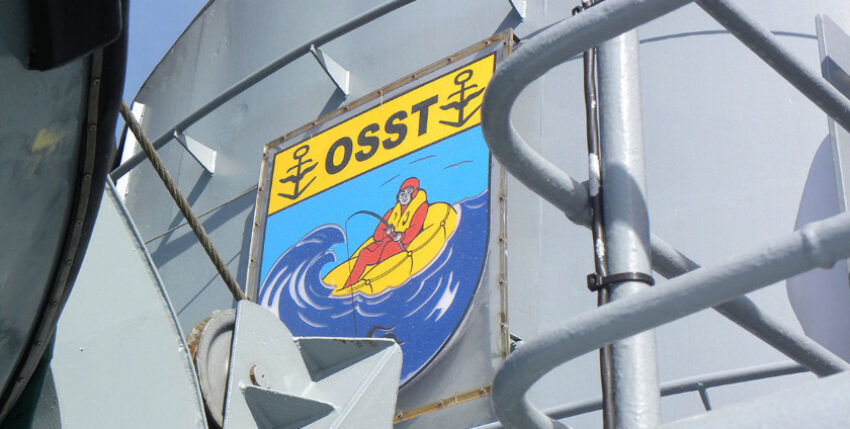







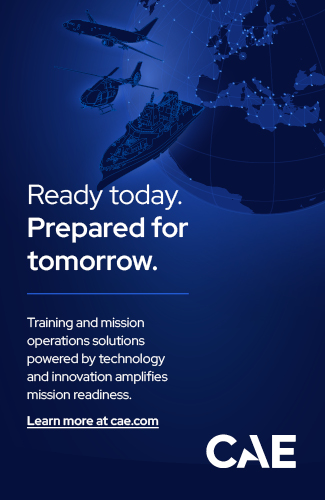

2 responses
Good article. Small note: the Federal Office of Equipment and Information Technology is abbreviated BAAINBw, not BAIUDBw.
Hello Mr Fröhling! Thank you - how could that happen? The bouquet must have gone to the wrong address. I've just corrected it.
A. Stephenson